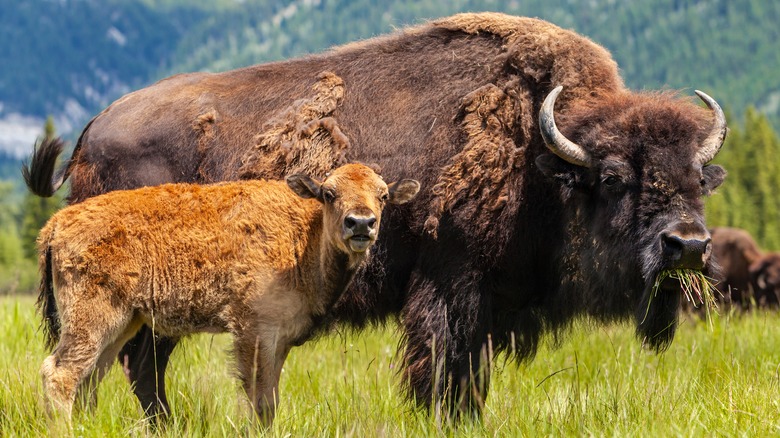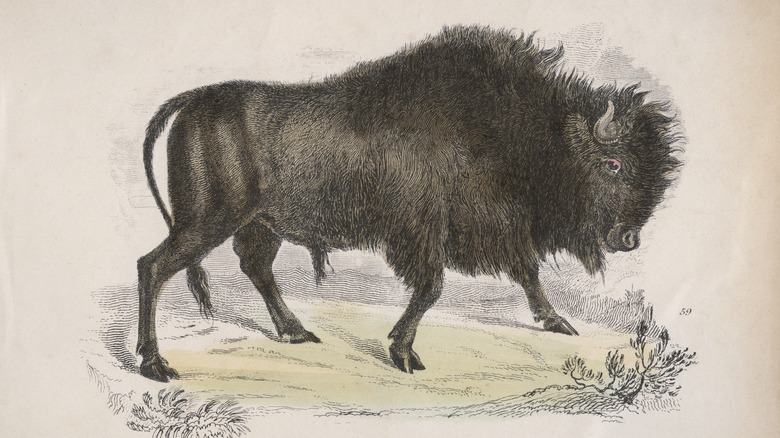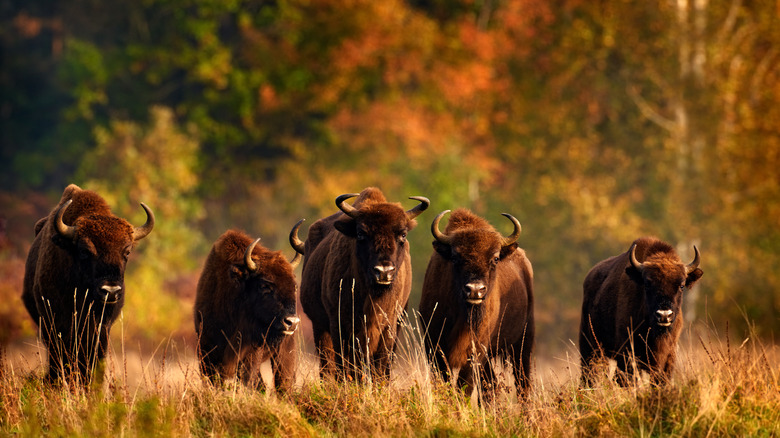How Bison Became The National Mammal Of America
American bison, commonly called buffalo, are the largest terrestrial mammal native to North America. According to the Smithsonian National Zoo, bison were once a widespread species, located across the continent from Alaska all the way to parts of Northern Mexico. The reduced population of bison in North America was greatly due to hunting, disease, and habitat loss, but conservation efforts have prevented the bison from going extinct. According to the World Wildlife Fund, conservation efforts in the 1930s helped to increase the wild bison population, but the species is still considered near threatened.
On May 9, 2016, the bison became the official national mammal of the United States, according to the National Park Service. This placed the bison as a national symbol, along with the bald eagle, which is the United States national bird (via The Washington Post). The decision to give the bison this special status has been a major success for conservationists, who state that the bison is an important part of the habitat in which it resides in (via Defenders of Wildlife).
The bison population was almost wiped out in the 1800s
According to Defenders of Wildlife, an estimated 30 million bison lived in the Great Plains of North America until the 1800s, when the population was severely over-hunted. This mass slaughter, combined with tick fever (per the North Dakota Historical Society, posted at Old Ones Dream), left less than 1,000 bison in the wild, bringing the species near the point of extinction. The mass killing of bison was a result of political motives by government figures who hoped to control Native Americans of the plains, of which many tribes consider the bison an important part of their culture and survival (via the National Park Service).
In the 1800s, the U.S. government began to cut down on bison populations in order to control Native American tribes in the west, who relied on the bison for meat, skins, and bones. This was a dark time for Native Americans, with violence against them and the bison they used for resources. According to The Atlantic, a hunter who was feeling guilty about shooting 30 bison in a single hunting trip was told, "kill every buffalo you can! Every buffalo dead is an Indian gone!" This mindset was widespread, with the secretary of the interior, Columbus Delano, writing in 1873, "I would not seriously regret the total disappearance of the buffalo from our western plains, in its effect upon the Indians" (via The Washington Post).
Bison are a keystone species for the Great Plains
In addition to causing harm to Native Americans, the slaughter of the bison population also had an impact on the environment in which they lived. This is because bison are a keystone species in the Great Plains, helping to maintain the habitat. According to Defenders of Wildlife, bison positively impact their environment by aerating soil with their hooves, which spreads native seeds and aids in plant growth. This allows the area to thrive, creating a habitat for many other species that live in the plains.
By making the bison the United States national mammal, conservationists are helping to protect the species and the Great Plains of North America. While the National Bison Legacy Act, the law under which the bison became the national mammal, does not offer the bison any new protections, it recognizes the importance of the bison as an American symbol. It also recognizes the importance of the bison in the history of many Native American tribes. According to the National Park Service, the act reminds us of the important cultural and ecological role that the bison has played throughout all of American history.


